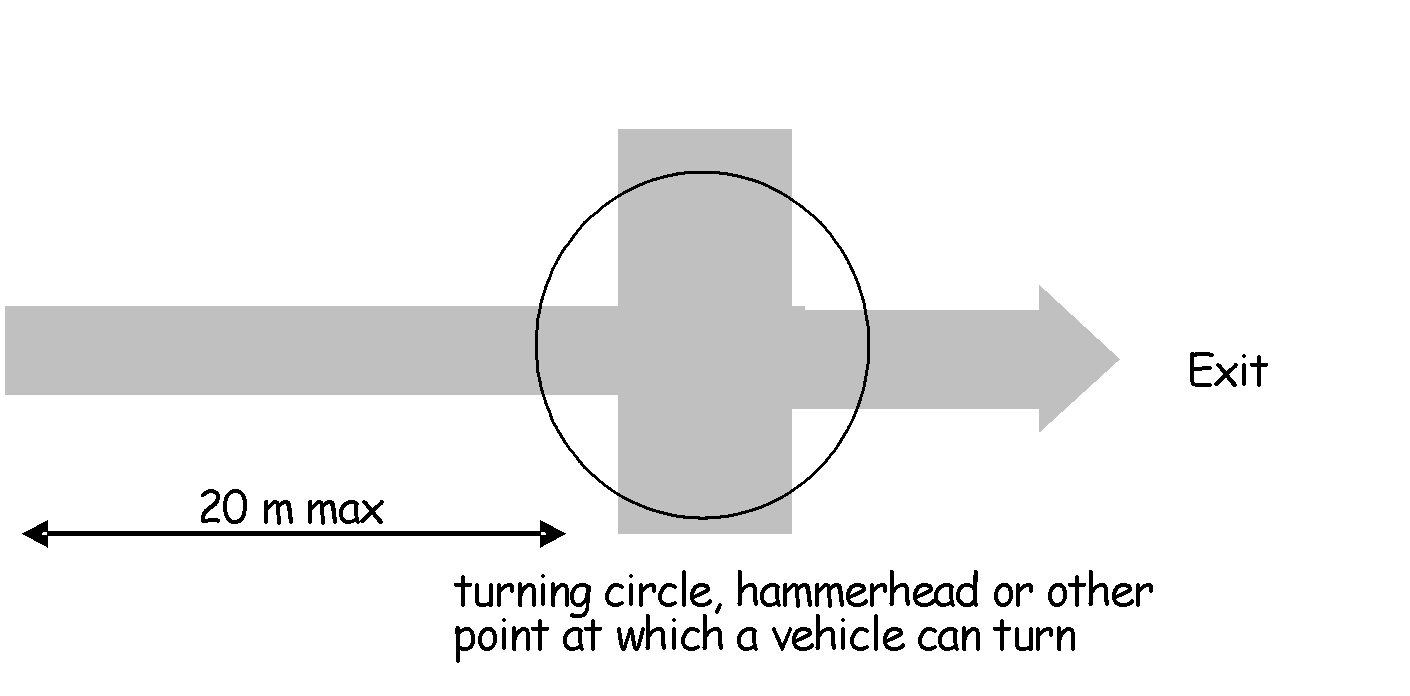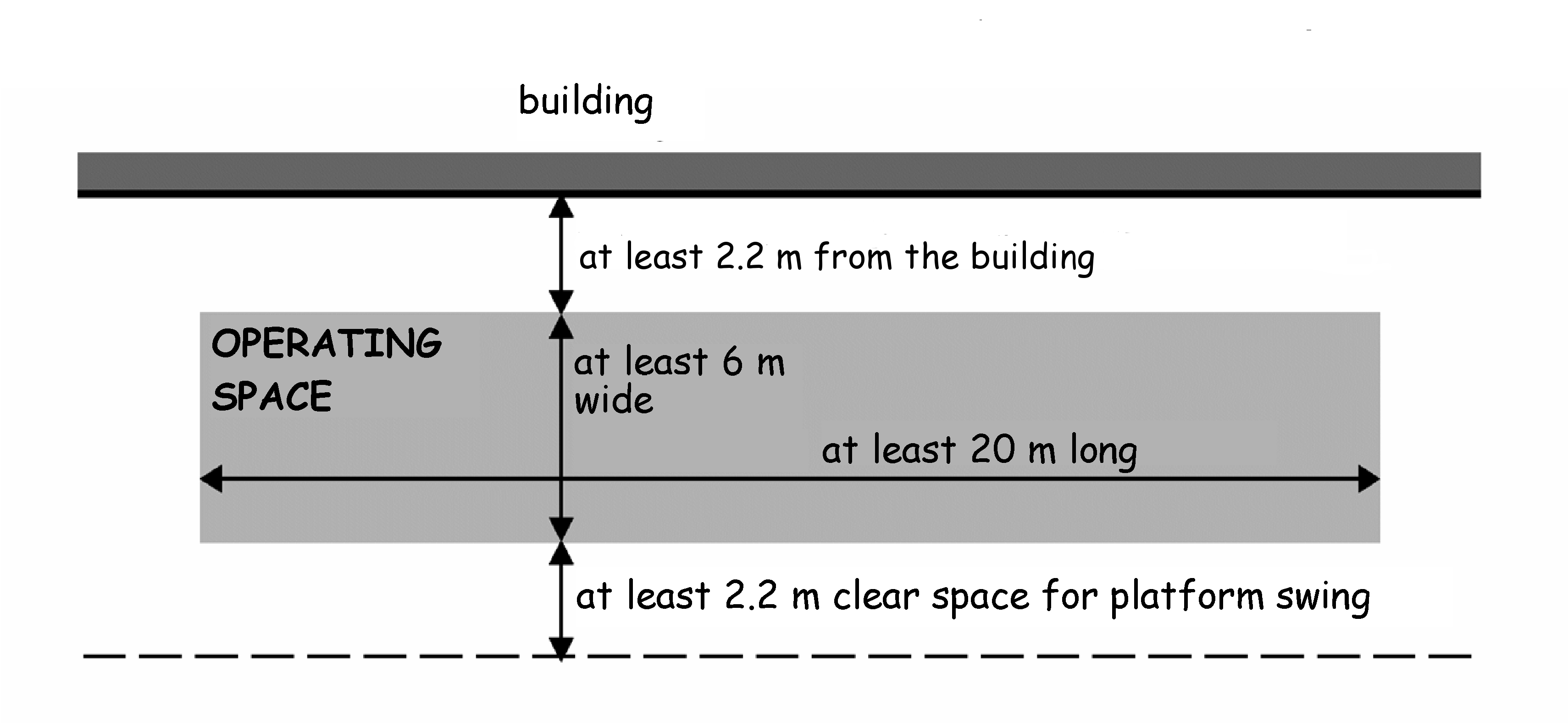2.12 Fire and rescue service access
|
Vehicle access to the exterior of a building is needed to enable high reach appliances, such as turntable ladders and hydraulic platforms, to be used, and to enable pumping appliances to supply water and equipment for fire-fighting and rescue activities. The access arrangements increase with building size and height.
Conversions - in the case of conversions, as specified in regulation 4, the building as converted shall meet the requirements of this standard in so far as is reasonably practicable, and in no case be worse than before the conversion (regulation 12, schedule 6).
Access from a public road should be provided to assist fire and rescue personnel in their rescue and fire-fighting operations. Whilst the access will depend to some extent on the vehicles and equipment used, assistance may be provided from adjoining fire and rescue services when the need arises. For this reason, the more demanding guidance for high reach appliances may be recommended by the fire and rescue service. This may have a significant impact on planning and a feasibility study may be appropriate. Consultation with the fire and rescue service at the earliest opportunity is strongly recommended.
Vehicle access should be provided to at least one elevation of all buildings to assist in fire-fighting operations. The vehicle access route should be provided to the elevation or/and rescue elevations where the principal entrance, or entrances, are located.
Vehicle access is recommended to other elevations of a building where:
the area of any compartment in a non-domestic building is more than 900m2, or
the building footprint has a perimeter more than 150m.
However vehicle access routes to more than one elevation may not always be possible due to the constraints of the site, and pedestrian access for fire and rescue service personnel, as described in clause 2.12.4, may be sufficient.
To assist fire and rescue service personnel to connect a short length of hose between the pumping appliance and dry/wet riser inlets (see guidance to Standard 2.14) quickly and efficiently, parking spaces should be provided at a distance not more than 18m from riser inlets.
Access routes to buildings for fire and rescue service vehicles or personnel should not be assessed in isolation and the proposed vehicle access routes will in effect, be dictated by need for water hydrants and fire mains (see clause 2.14.7).
Dead end route - fire and rescue service vehicles should not have to reverse more than 20m from the end of an access road. Where any dead-end route is more than 20m long, turning facilities should be provided. This can be a turning circle or a hammerhead designed on the basis of the diagram and table below:
Table 2.15. Access route for fire and rescue service vehicles
| Access | High reach appliance | Pumping appliance only [1] |
|---|---|---|
| Minimum width of road between kerbs | 3.7m | 3.7m |
| Minimum width of gateways etc | 3.5m | 3.5m |
| Minimum clearance height | 4.0m | 3.7m |
| Minimum turning circle between kerbs | 26.0m | 16.8m |
| Minimum turning circle between walls | 29.0m | 19.2m |
| Minimum axle loading | 14 tonnes | 14 tonnes |
Additional information:
Where, in consultation with the fire and rescue service, access is needed for pumping appliances only, the smaller dimensions may be used.
Following consultation with the fire and rescue service, if it is recommended that an operating space, or spaces, for a high reach appliance should be provided, the operating space(s) should:
have a ground loading capacity of not less than 8.3kg/m2, and
be level or not have a gradient more than 1 in 12.
The operating space shown in the diagram below is suitable for either a hydraulic platform or turntable ladder.
Where a building has obstructions such as balconies or other projections, the building line should be taken to be the outer edge of the balconies or other projections.
It is common practice for fire and rescue service personnel to enter a building through the normal entrances and fight the fire head on. This is termed ‘offensive fire-fighting’.
In order to allow unobstructed access to a building for fire and rescue service personnel, a paved (or equivalent) footpath at least 900mm wide (see also Section 4 Safety) should be provided to the principal entrance, or entrances, of a building. In addition, where vehicle access is not possible to within 18m of the dry riser inlets (see clause 2.12.1) a footpath should also be provided to the riser inlets.
Every elevation which is provided with vehicle or pedestrian access for fire and rescue service personnel, should have a door giving access to the interior of the building. Inward opening doors are preferable because this allows easier forced entry by fire and rescue service personnel should the need arise. However an outward opening final exit door or emergency door (see clause 2.9.16) should also be considered as providing suitable access.

